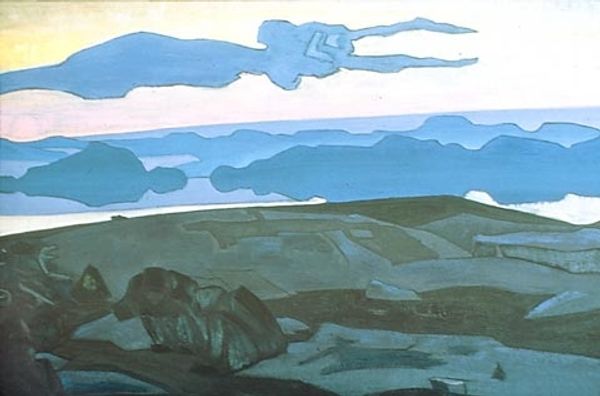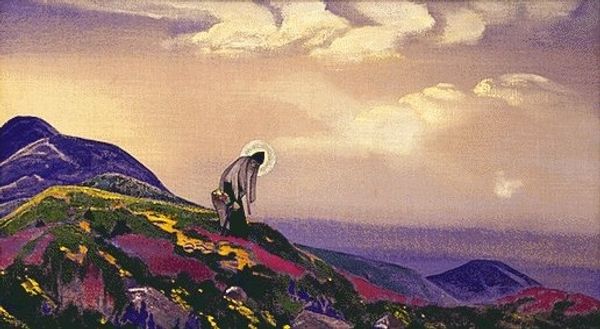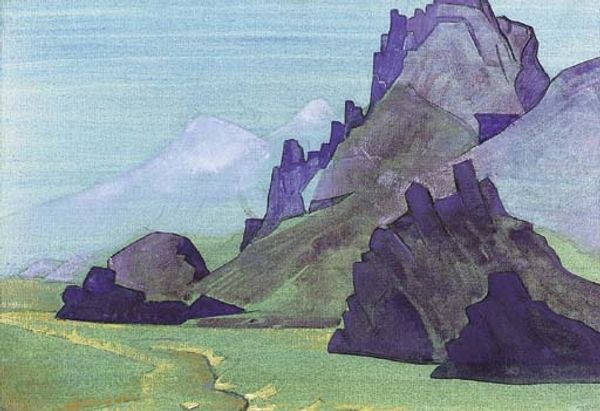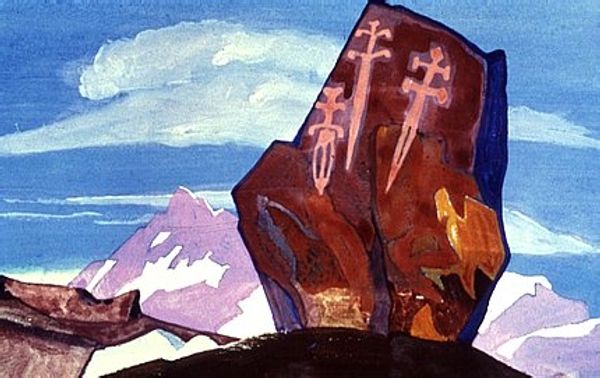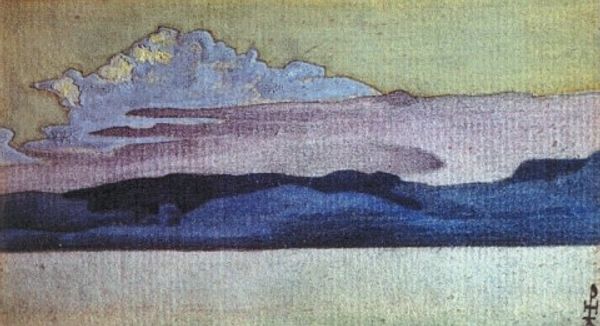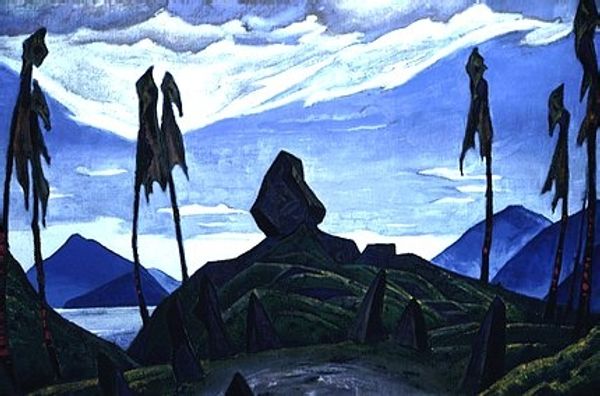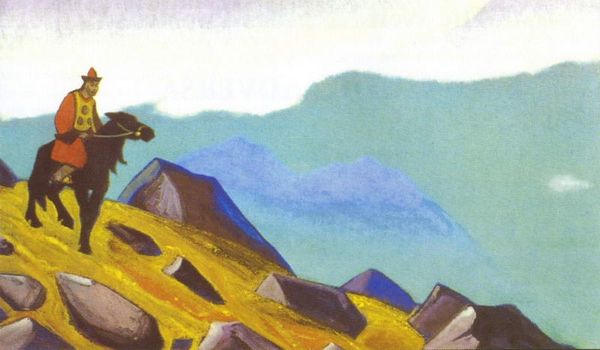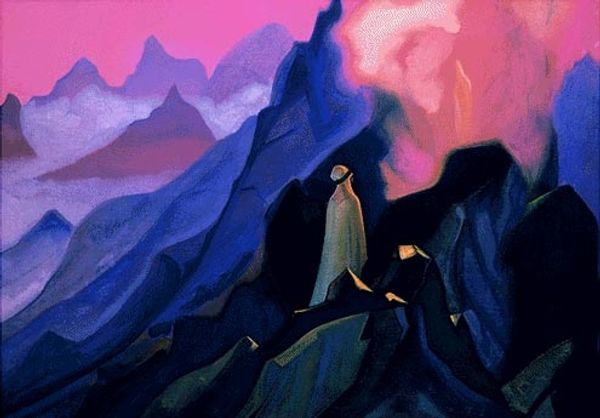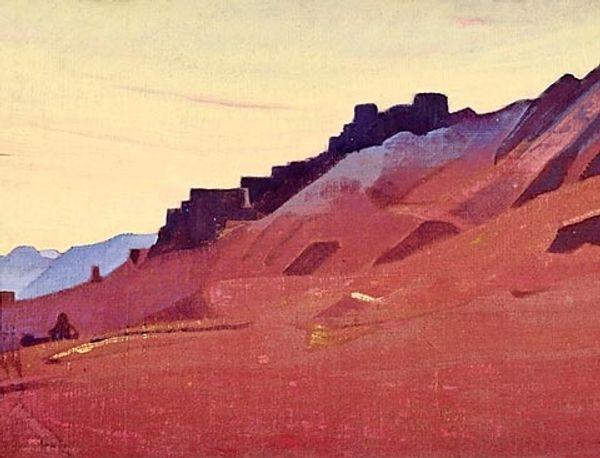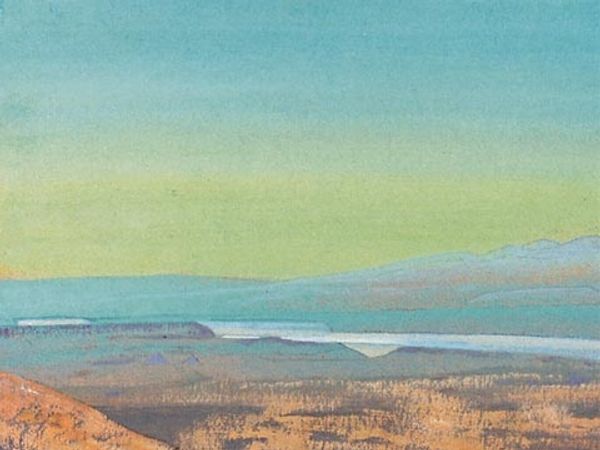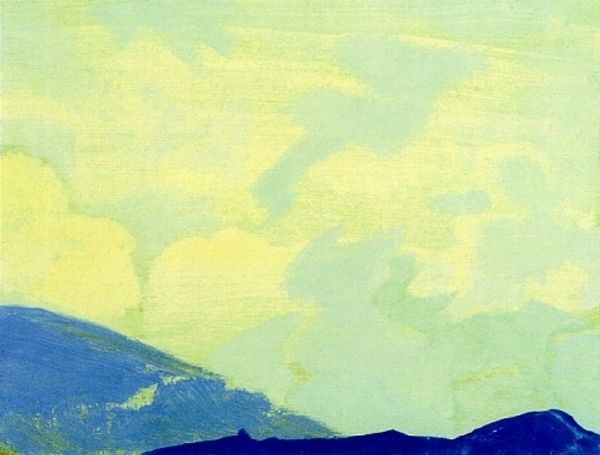
Copyright: Public domain
Editor: So, this is "Khan's Grave," an oil painting from 1935 by Nicholas Roerich. There’s a solitary feel to it, almost mournful, with those dark shapes silhouetted against the sky. What do you make of it? Curator: The image resonates deeply with primal symbols – the cairn, the weathered standard – each element weighted with history and loss. Think of what a grave signifies, beyond just physical remains. It represents memory, lineage, the end of a narrative. Roerich masterfully uses the landscape to amplify this feeling of quiet, enduring sorrow. Editor: The standard is intriguing – it looks almost like a tattered flag. Does that symbol carry any particular significance here? Curator: Absolutely. Flags, banners, and standards historically represent power, identity, and allegiance. In this context, the tattered banner is poignant. It speaks of lost power, perhaps a forgotten empire, reduced to a haunting echo. Consider its position relative to the sky – is it reaching for something unattainable, or surrendering to the heavens? Editor: I never thought of it that way, but now that you mention it, it does feel more like a surrender. The muted colours enhance that, I think. Curator: Yes, Roerich's choice of colour strengthens that emotive element. How do these muted colours make you feel? Editor: They almost feel… faded, like memories themselves. This painting makes you think about the passing of time, doesn’t it? Curator: Precisely. Roerich invites us to contemplate cultural memory, and the weight of history – the visual vocabulary through which humanity expresses continuity in the face of time's relentless march. What stays with you most from this image? Editor: The idea of a narrative frozen in a landscape, a whisper of a forgotten story. Curator: A fitting epitaph for a Khan's grave, wouldn't you say? A silent testament.
Comments
No comments
Be the first to comment and join the conversation on the ultimate creative platform.
